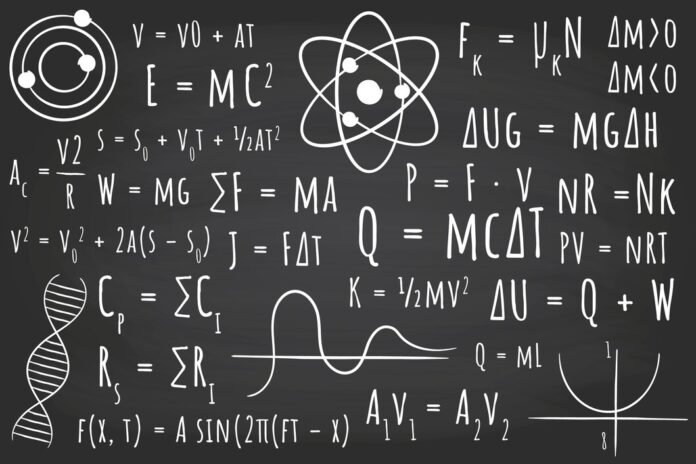Physics: Formulas and Facts
Physics, being a very practical and complex subject, works on principles, theories, facts, and formulas. Every statement of physics is aligned or given up on a certain principle or formula. But, does one ever wonder where these formulas come from in the first place? Not to beat around the bush, the facts and formulas are derived using plenty of numbers, mathematical concepts, and previously provided theories.
Learning the derivation of physics formulas is a crucial aspect of studying physics. Learning is worthless if one does not understand or hold on to the gist of why, when, and how a phenomenon is expected to happen.
Advantages of Studying Derivation of Physics Formulas
- To master Physics, a wide variety of concepts like Archimedes’s Principle, buoyancy law, Charles Law, Stokes Law, and many more concepts are needed to be studied. Studying these is not enough, but studying their formulation and derivation could help one go a long way.
- Immense knowledge regarding the versatility and possibilities of the formulas is only known if one thoroughly understands the derivation.
- Physics is not only about concepts and tricks; it is a branch of science that supports activities such as aircraft designing, the architecture of a building, the motion of objects, designing automobiles, etc. So, focussing on derivations of formulas becomes ethically essential for any physics student.
- If one is opting for or planning to give any competitive or science exam, one must focus on the derivation of physics formulas. Since this is an exciting and important topic, several questions could be framed.
Topics that are the Gold Mine of Physics!
Some important physics derivations involve the following concepts and principles:
Archimedes’s Principle
This principle is applied to the construction of submarines. Archimedes’s Principle states that when one submerges an object in water, an upward force or reluctant force is applied to the object in the opposite direction. This upward buoyant force equals the weight of the water displaced by the submerged object.
Frictional Force
It comes into existence when the surfaces of two objects come in direct contact with each other. It works in the opposite direction of the object affecting its direction and speed.
Laws of Motion
If one has ever watched Fast and Furious, he may wonder how the cars in the movie are so accurately placed and perform mind-blowing stunts. Apart from graphics, laws of motion are the principles or aspects these car stunts rely on. Acceleration, velocity, speed, the law of inertia, etc., are some of the fundamental laws of motion.
- Acceleration
The rate at which the velocity of an object changes with the change in time is called acceleration.
The formula of which is given below:
a = (v – u)/t,
where a is the acceleration of the object, u and v are the initial and final velocities of the object and t is the time interval.
- Law of inertia
This is one of Newton’s most critical laws, which states that an object tends to keep moving in a uniform motion or remain stationary until and unless it is acted upon by force.
- The second law of motion
It states that the force is a product of the mass and acceleration of the body.
Formula:
where m is the mass of the body and a is the acceleration of the body.
Derivation of Various Physics Formulas
Derivation of Archimedes Principle
Archimedes’s principle is given as follows,
Fb = ρgV
Where Fb refers to the buoyant force, ρ is the density of the fluid displaced, V is the volume of the submerged object, and g refers to the acceleration offered by gravity.
Here we know,
This implies,
Also,
This gives
Derivation of Frictional Force
The frictional force is given as the following,
Ff = μN
Here, Ff = frictional force
μ = coefficient of frictional force
N = the normal force applied to the body
Derivation of First Equation of Motion
Acceleration = Change in velocity/ Time
Taken Acceleration = (Final velocity – Initial velocity) / Time taken
or
Here, v is the final velocity, u refers to the initial velocity and a refers to acceleration, whereas t is the time.
Derivation of Second Equation of Motion
The second equation of motion is given by,
Derivation:
Distance = Average velocity x Time
Average velocity =
Distance (t) =
The first equation of motion says,
This means,
Derivation of the Third Equation of Motion
Third equation of motion states,
Derivation,
(First Equation of Motion)
or
But, distance = average velocity x time.
Therefore,
or
Recommended Articles:
The Working of a Boiler: How Does It Work?
Know The Definition Of ‘Work’ According To Physics
Understanding Work, Energy, and Power – Definitions, Examples, Formulas, and Units
Everything You Need To Know About Wave Power
What is Wave Number in Physics?
Stokes Law, Derivation, Derivation of Moment of Inertia, Coriolis Force derivation, Drift Velocity Derivation, etc., are some of the crucial derivations of physics. A famous Greek Mathematician Archimedes provided the Archimedes's Principle in 246 BC. Try to understand the logic behind each step and write down every step of the derivation, then memorize the concept and align it with the definition of the same to learn any derivation of physics formulas. Formulas involving Newton's second law of motion, acceleration, power, velocity, pressure, kinetic energy, etc., are some of the important formulas of physics. Galileo Galilei proposed the Law of Inertia for the first time. The Gold Mine of Physics: Deriving Important Physics Formulas FAQs
What are some of the important derivations of physics formulas?
Who gave Archimedes's Principle?
How to memorize Physics Derivations?
Which Physics formulas are the most important for a class 10th student?
Who gave the Law of Inertia?
